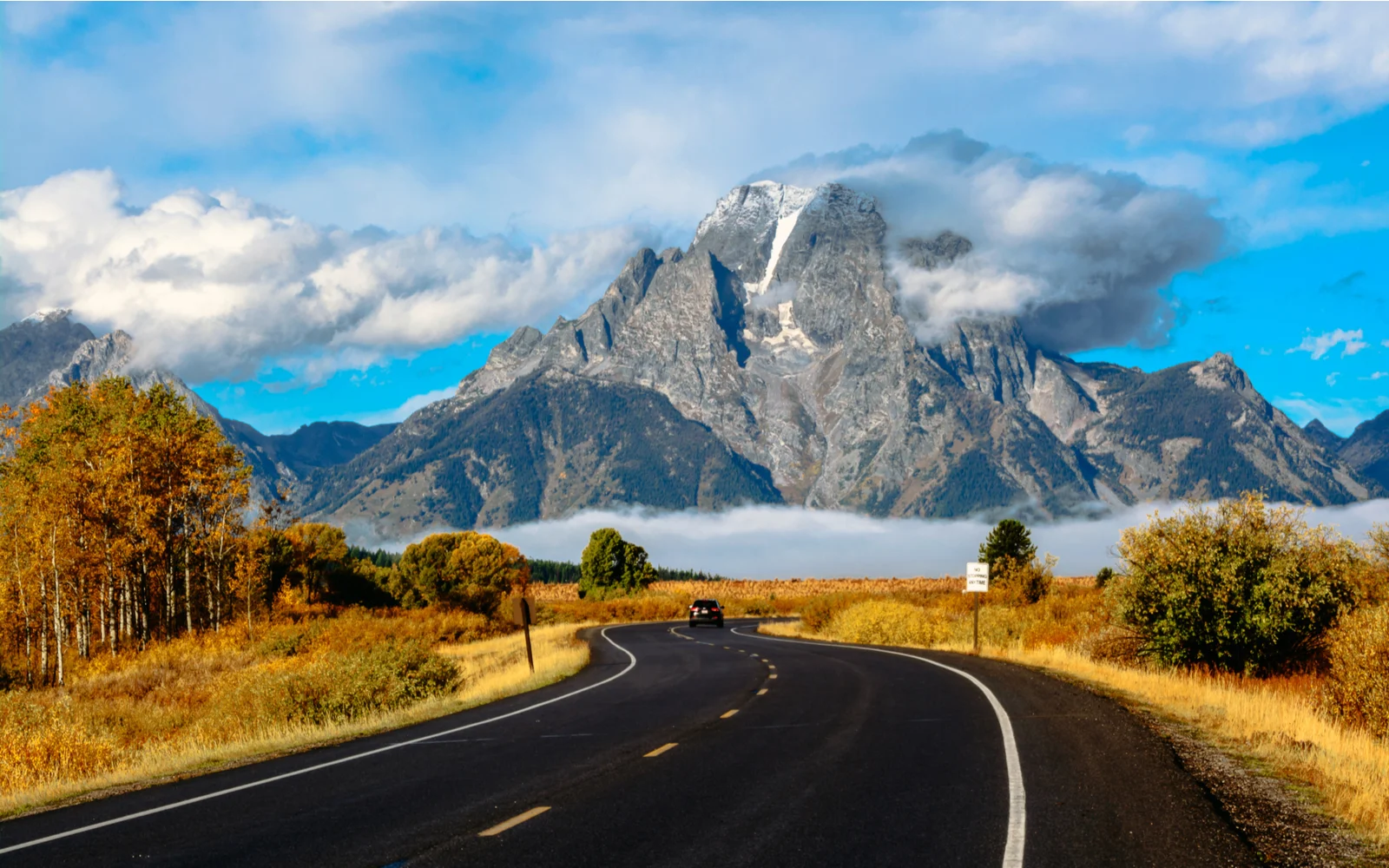What's the best time to visit Grand Teton National Park?
The best time to visit Grand Teton National Park is during the summer months of June to September when the weather is mild, all trails are accessible, and a variety of activities like hiking and boating are available. With its high elevation, the park enjoys pleasant days and cool nights in summer, contrasting the harsh winters and making it the ideal season for exploration and enjoying the scenic beauty.
Grand Teton National Park in Wyoming is home to some of our nation’s most spectacular mountain scenery. The Park has hundreds of acres of mountains, valleys, alpine lakes, and dramatic landscapes.
Make sure to visit the famous landmarks like the imposing Grand Teton Mountain itself and historic sites such as the Mormon Row Historic District. Visitors can choose from all kinds of adventure activities, from skiing in Jackson Hole (yes, the famous resort is technically in Grand Teton) in the winter to hiking and rafting in the summer.
Since the seasonal activities differ in Grand Teton so much, your experience will depend a lot on when you go. Keep reading to learn more about when to visit the park.
Overall Best Time to Visit Grand Teton National Park
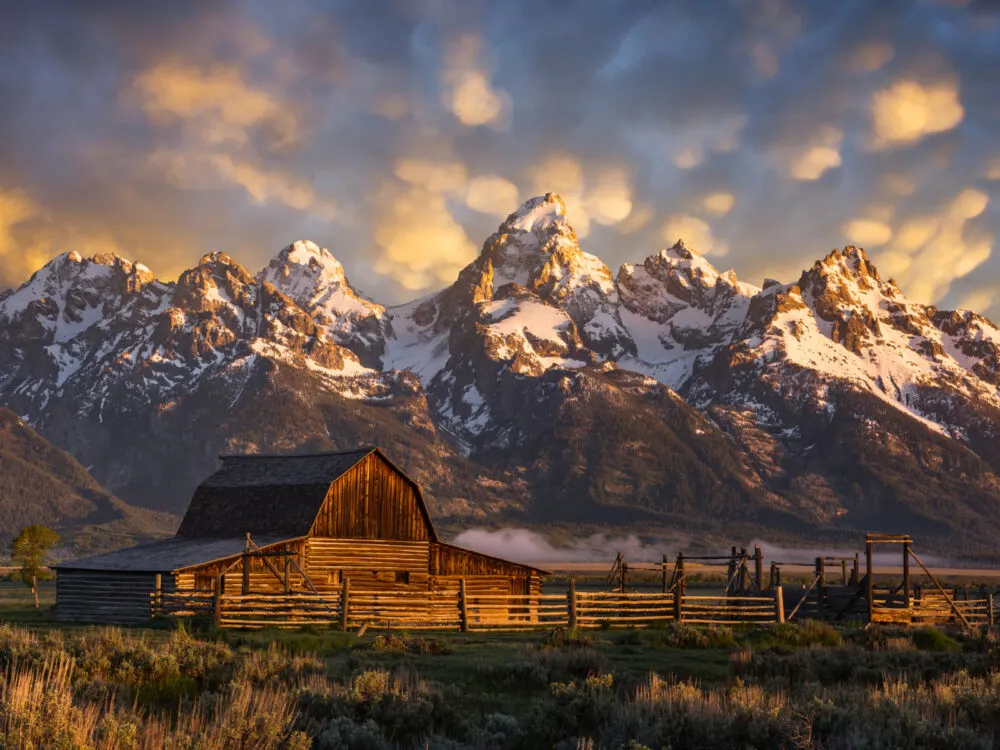
Anthony Heflin/Shutterstock
The best time to visit Grand Teton National Park is in the summer (June to September), when the park is fully accessible to visitors and the weather is as calm as it gets at this altitude.
Grand Teton National Park’s climate and conditions are similar to other parks located in the U.S. West, like Rocky Mountain National Park. The Park has a continental climate, which means it has four distinct seasons.
Its high elevation (even the lowest valley is at over 6,000 feet above sea level) means that similar to Yellowstone and similar parks, it tends to have harsh winters.
By contrast, summers are gentle and mild. July is the hottest month, but even then, temperatures rarely reach above 80 degrees Fahrenheit even at lower altitudes. Even in the middle of the summer, nights are still chilly, with temperatures usually in the low 40s.
You will still need layers to go hiking comfortably, but it’s much more pleasant than visiting in the dead of winter. In the summer, the trails are finally all accessible to visitors and you will be able to actually see what you were hoping to see.
Many scenic drives and trails in the park are closed with snow during the snowy season, which lasts from October to May. The last drive to reopen is Signal Mountain Summit Road, which sometimes is closed due to snow well into June.
You have far more choices in terms of activities that you can do in the summer, like:
- Hiking
- Cycling
- Boating
- Rafting
- Horseback riding
Organized tours by local operators or ranger-guided walks usually only run during the summer high season, so this is a better time to visit if you are less experienced and would rather have a guide telling you what to do and giving you context for what you are seeing.
The landscape is also at its most beautiful in the summer. The melted snow reveals the grassy slopes and dramatic mountains in all of their glory.
Due to the high elevation, wildflower season comes later here than in many other places, so you’ll get to see alpine wildflowers in all of their glory.
Summer is also the best time to visit in terms of convenience because most of the amenities within the park are only open from mid-May or June until October. Visitor centers, boat launches, campgrounds, and other places just operate for a few months.
Although Grand Teton National Park isn’t as famous as some of Wyoming’s other parks, it’s fast becoming a popular destination as well.
It’s so popular that the park had to implement measures like requiring advanced reservations for camping. Popular sites may have plenty of people in the summer, but solitude is usually a short hike away.
Cheapest Time to Visit Grand Teton National Park
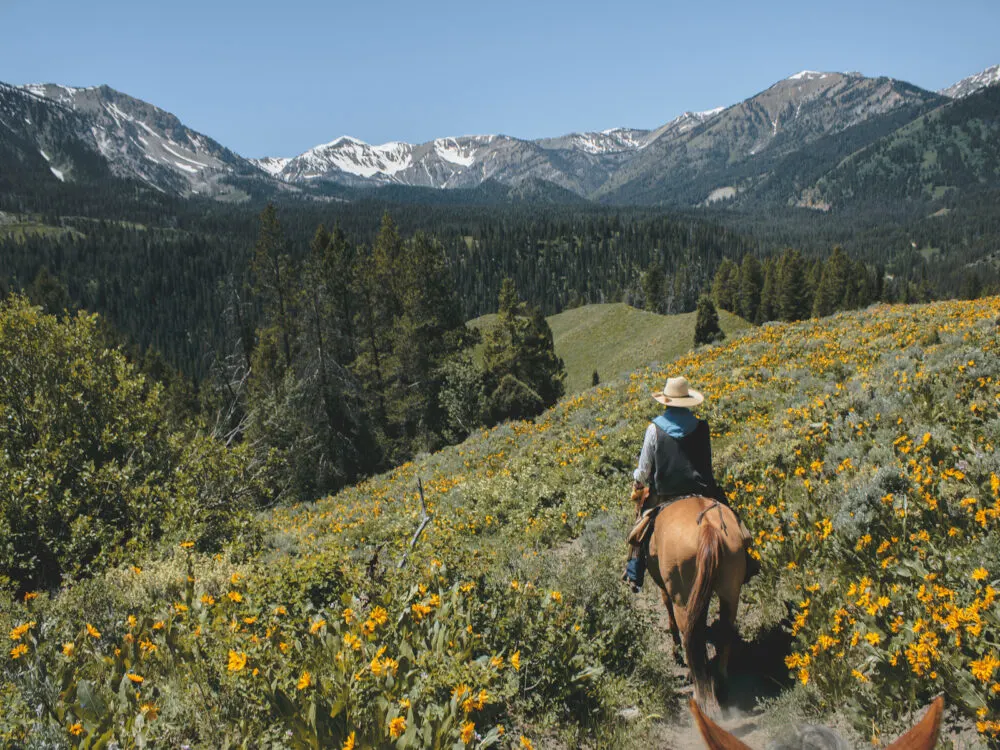
William Shafer/Shutterstock
The cheapest time to visit Grand Teton National Park is in the early fall. Accommodation options in Grand Teton usually close down by mid-October. This includes campgrounds and the lodges located within park grounds.
However, the month of September and the first few weeks of October offer a narrow window of time when most crowds are gone but the lodges are still open, so you can hope for some discounts.
Another option is to stay in nearby Jackson Hole. Since the town is more popular for its skiing, the fall is a shoulder season, so you can expect 20% to 35% discounts on hotel rates. That way, you’ll get to experience the charming mountain town and the majesty of Grand Teton.
Jackson Hole is also home to the closest airport to Grand Teton National Park. The fall is also the best time to snag flight deals for this airport, especially the month of November. Early fall is still gorgeous in Grand Teton National Park.
Most trails don’t get snow until mid-October, and by visiting earlier in the season you can still catch many of the amenities while they are still open. The foliage is spectacular. Fall is also elk rut season in the area, so it’s a spectacular time to see these animals and hear their chilling call.
Least Busy Time to Visit Grand Teton National Park
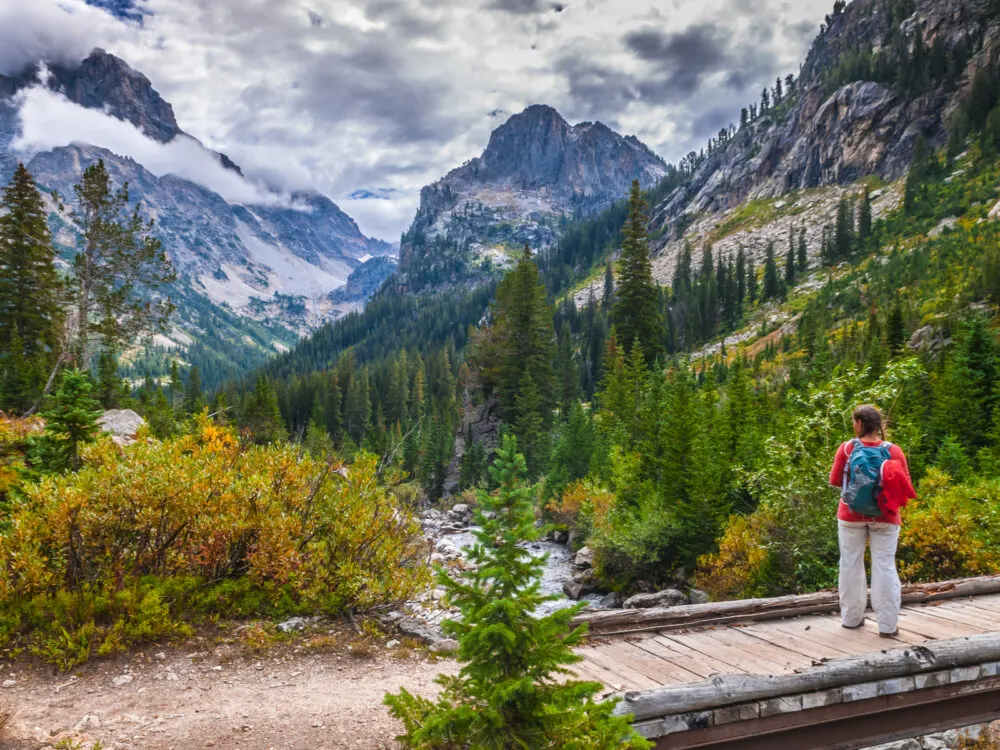
Kris Wiktor/Shutterstock
The least busy time to visit Grand Teton National Park is the winter, when the harsh weather puts off many visitors. Winter this high up in the mountains is a true force of nature.
The average daily maximum temperature in December and January is about 26 degrees, which means that it usually gets much colder. There is heavy snow on the ground from November to April, and snow storms in September, October, May, and even June at higher altitudes.
However, if you’re a true lover of winter sports, you may find this the best time to visit Grand Teton National Park. You can go cross-country skiing and snowshoeing on Teton Park Road, which closes down for motorists and opens up for non-motorized traffic.
More adventurous visitors can try their hand at backcountry skiing, but you should make sure that you have the necessary training and permits first.
Winter isn’t the cheapest time to visit Grand Teton National Park because ski season in nearby Jackson Hole is in full swing, driving up the cost of accommodation and flights. However, within the park itself, you’ll see barely any other people on the trails.
Worst Time to Visit Grand Teton National Park
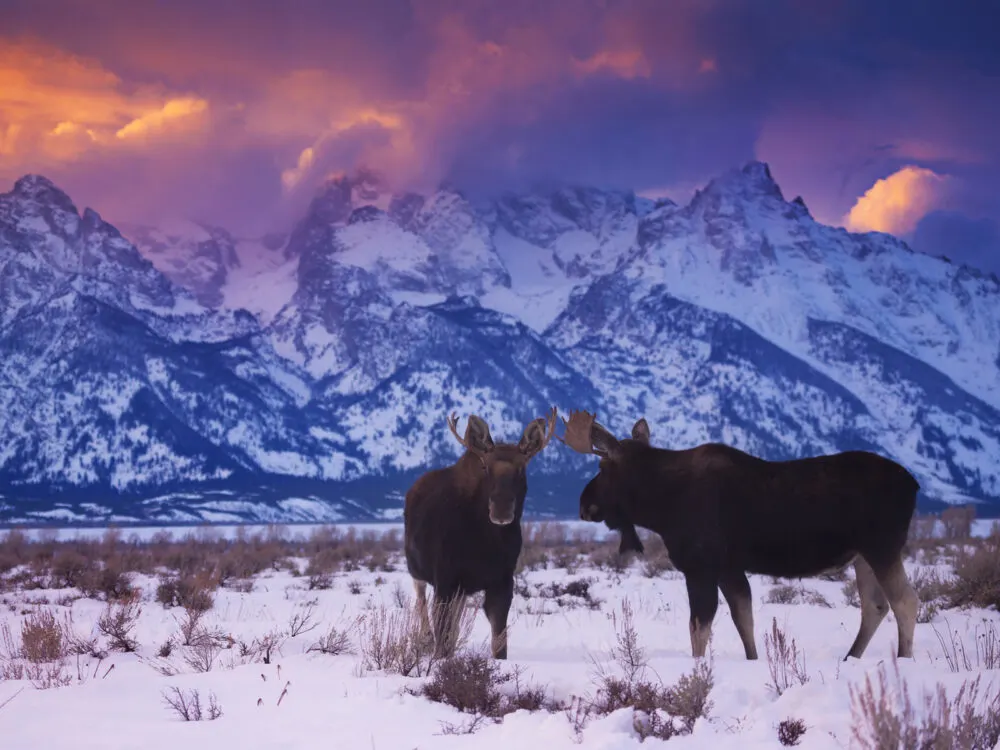
Chase Dekker/Shutterstock
The worst time to visit Grand Teton National Park is the spring, when the transitional period makes many trails and roads almost impassable. Spring is a bit of a misnomer in Grand Teton.
In April, average daily temperatures are below 50 degrees Fahrenheit and snowfall is still possible. The weather warms up a bit by May, but not by much. Spring is the region’s most unpredictable season.
A string of beautiful sunny days can be followed by a snow squall or weeks where the temperature doesn’t go above freezing, making it unpleasant to go on any sort of longer journey.
By this season, snow has started to melt on the trails at lower elevation, which is not necessarily a good thing. The trails turn into mud and many close down completely as the park engages in much-needed maintenance.
Spring has the fewest options for outdoor activities because the terrain is impassable. There are always a few trails open, especially for cyclists.
Before the Teton Park Road opens for vehicles, they usually open it just for bicycles and other non-motorized vehicles. Spring receives very few visitors, so you’ll get to have a lot of the trails to yourself; just be prepared for the muddy terrain.
Grand Teton by Month: Climate & Activities
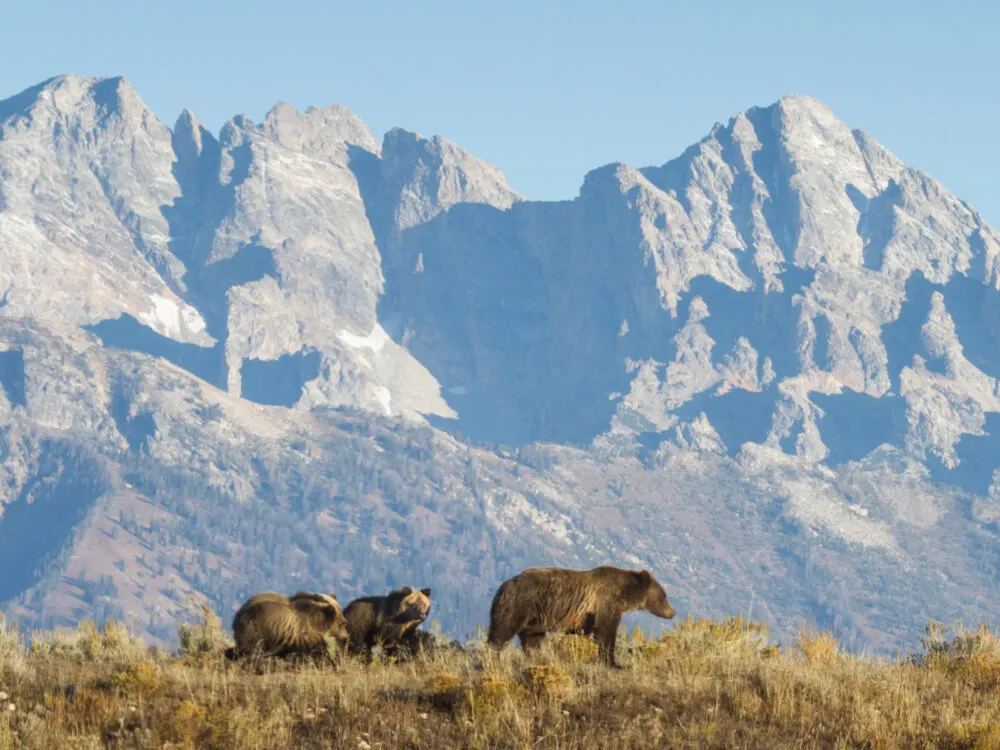
Green Mountain Exposure/Shutterstock
Still unsure about the best time to visit Grand Teton National Park? Take a look at our summary of the weather and climate by month below:
January
January in Grand Teton National Park, with temperatures often ranging from 0 to 30°F (-18 to -1°C), is a winter wonderland. It’s perfect for cross-country skiing, snowshoeing through the pristine landscapes, and capturing stunning winter photography.
February
February continues the snowy splendor, ideal for experiencing the serenity of the park in winter, enjoying wildlife viewing opportunities, and participating in ranger-led snowshoe walks.
March
As spring approaches, March offers temperatures from 10 to 39°F (-12 to 4°C). Witness the beginning of the thaw, enjoy late-season skiing, and spot the early signs of wildlife emerging from winter.
April
April’s milder weather, with temperatures between 20 to 50°F (-7 to 10°C), beckons for scenic drives to view the emerging spring colors, watching the migration of elk and other animals, and exploring the park as it awakens from winter.
May
May brings warmer days, from 34 to 60°F (1 to 16°C), perfect for hiking trails like Jenny Lake and Taggart Lake, witnessing the blooming wildflowers, and enjoying the vibrant birdlife returning to the park.
June
June, welcoming summer with temperatures between 39 to 70°F (4 to 21°C), offers ideal conditions for camping under the stars, rafting on the Snake River, and hiking in the Teton Range.
July
July’s warmth, ranging from 44 to 80°F (7 to 27°C), is all about exploring the park’s extensive trail network, enjoying picnics amidst breathtaking scenery, and taking guided wildlife tours.
August
In August, with temperatures of 43 to 78°F (6 to 26°C), hike to the iconic Inspiration Point, enjoy boating on Jackson Lake, and explore the Laurance S. Rockefeller Preserve.
September
Welcoming fall, September, with temperatures from 33 to 68°F (1 to 20°C), is perfect for viewing the autumn colors, fishing in the park’s rivers and streams, and enjoying wildlife viewing during the elk rutting season.
October
October’s cooler days, from 22 to 55°F (-6 to 13°C), are ideal for tranquil autumn hikes, experiencing the quieter side of the park, and enjoying the fall foliage against the backdrop of the Teton Range.
November
November, as the air turns brisk, temperatures from 13 to 39°F (-11 to 4°C), is a time for enjoying the early snowfalls, participating in ranger-led programs, and experiencing the peaceful solitude of the park.
December
December brings the winter landscape back, with temperatures ranging from 3 to 28°F (-16 to -2°C). This month is perfect for winter camping for the adventurous, enjoying winter photography, and experiencing the serene beauty of Grand Teton in snow.
Frequently Asked Questions
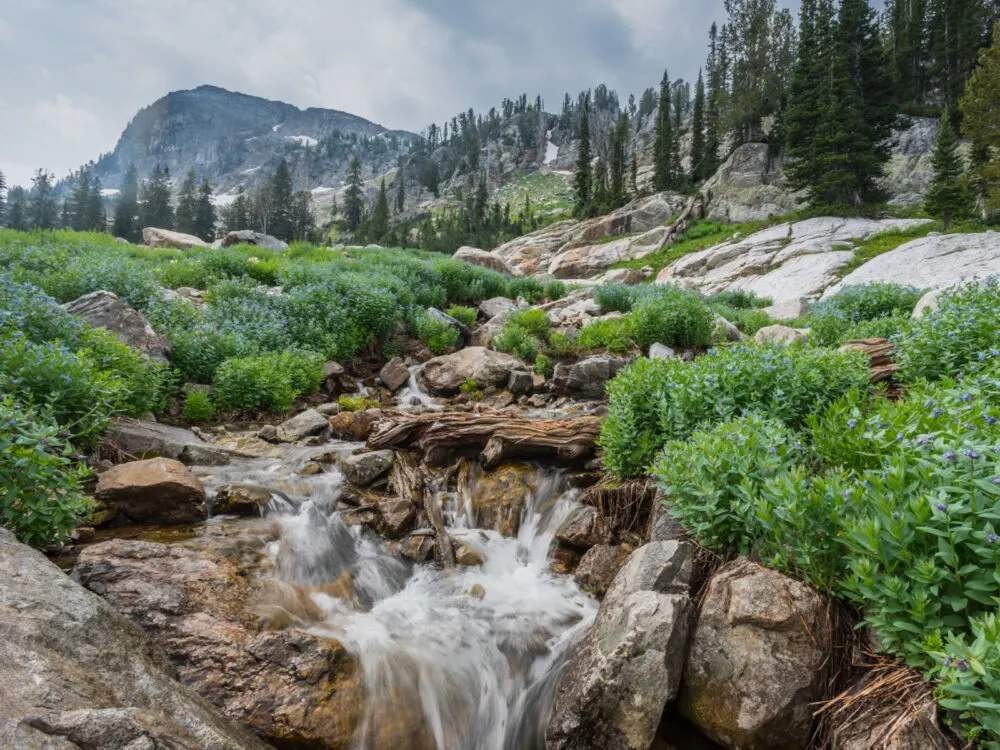
Kelly VanDellen/Shutterstock
Here are a few of the best questions people tend to ask about picking a time to visit Grand Teton:
What is the best month to visit the Grand Tetons?
The best month to visit the Grand Tetons is in September, which still has good weather but far fewer crowds.
How many days do you need in Grand Teton?
You should spend at least two days in Grand Teton, but true nature lovers will probably want to spend much longer.
Is Yellowstone or Grand Teton better?
Yellowstone has more famous landmarks, but Grand Teton is better if you want to hike in nature without many crowds, Grand Teton is the better option.
Is Grand Teton worth it?
Grand Teton is worth it because it has some of the most beautiful mountain scenery in the world and pristine nature.
How crowded is Grand Teton in June?
June is one of the most crowded months in Grand Teton as people take advantage of the warm weather to visit, but the park is big enough that you can still find solitude.
So, What’s the Best Place to Visit Grand Teton?
The best time to visit Grand Teton is in the summer, from June to September, when the snow thaws and temperatures are warm enough for hiking and other outdoor activities.
So, with so much to see and do, what are you waiting for — book your trip today and experience for yourself all that Grand Teton National Park has to offer. Happy travels!



